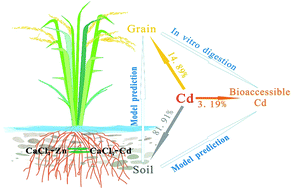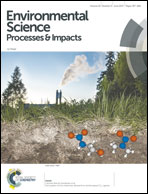Cadmium transfer from contaminated soils to the human body through rice consumption in southern Jiangsu Province, China
Abstract
Consumption of crops grown in cadmium-contaminated soils is an important Cd exposure route to humans. The present study utilizes statistical analysis and in vitro digestion experiments to uncover the transfer processes of Cd from soils to the human body through rice consumption. Here, a model was created to predict the levels of bioaccessible Cd in rice grains using phytoavailable Cd quantities in the soil. During the in vitro digestion, a relatively constant ratio between the total and bioaccessible Cd in rice was observed. About 14.89% of Cd in soils was found to be transferred into rice grains and up to 3.19% could be transferred from rice grains to the human body. This model was able to sufficiently predict rice grain cadmium concentrations based on CaCl2 extracted zinc and cadmium concentrations in soils (R2 = 0.862). The bioaccessible Cd concentration in rice grains was also able to be predicted using CaCl2 extracted cadmium from soil (R2 = 0.892). The models established in this study demonstrated that CaCl2 is a suitable indicator of total rice Cd concentrations and bioaccessible rice grain Cd concentrations. The chain model approach proposed in this study can be used for the fast and accurate evaluation of human Cd exposure through rice consumption based on the soil conditions in contaminated regions.



 Please wait while we load your content...
Please wait while we load your content...